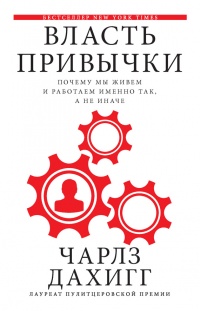Читать книгу "Секреты лаборатории питания. Наука похудения, мифы о силе воли и пользе диет - Трейси Манн"
Шрифт:
Интервал:
Закладка:
45. Fujita and Han, “Moving Beyond Deliberative Control of Impulses”.
ГЛАВА 9. ЗНАЙТЕ, КОГДА ВЫКЛЮЧИТЬ МОЗГ
1. Jon Henley, “Merde Most Foul”, Guardian, April 12, 2002, http:// www.theguardian.com/world/2002/apr/12/worlddispatch.jonhenley.
2. Suzanne Daley, “Budget Cuts May Foul Sidewalks of Paris”, New York Times, November 6, 2001, http://www.nytimes.com/2001/ll/06/ world/budget-cuts-may-foul-sidewalks-of-paris.html.
3. D. Neal, W. Wood, and J. Quinn, “Habits — A Repeat Performance”, Current Directions in Psychological Science 15, no. 4 (2006): 198-202; Judith A. Ouellette and Wendy Wood, “Habit and Intention in Everyday Life: The Multiple Processes by Which Past Behavior Predicts Future Behavior”, Psychological Bulletin 124, no. 1 (1998): 54-74, doi: 10.1037//0033-2909.124.1.54; Wendy Wood and David T. Neal, “A New Look at Habits and the Habit-Goal Interface”, Psychological Review 114, no. 4 (October 2007): 843-63, doi:10.1037/0033-295X.114.4.843.
4. Я значительно упрощаю информацию, полученную из большого объема исследовательской литературы, посвященной сравнению автоматического и контролируемого поведения. Интересный обзор можно найти в работе: J. A. Bargh and М. J. Ferguson, “Beyond Behaviorism: On the Automaticity of Higher Mental Processes”, Psychological Bulletin 126, no. 6 (November 2000): 925-45.
5. Joanna Robertson, “The Pampered Pooches of Paris”, BBC, 2011, http://www.bbc.co.uk/news/magazine-16268890.
6. В этой обстоятельной статье описываются десятки исследований, доказавших, что наши намерения редко совпадают с реальным поведением: Thomas L. Webb and Paschal Sheeran, “Does Changing Behavioral Intentions Engender Behavior Change? A Meta-Analysis of the Experimental Evidence”, Psychological Bulletin 132, no. 2 (March 2006) : 249-68, doi:10.1037/0033-2909.132.2.249.
7. Phillippa Lally et al., “How Are Habits Formed: Modelling Habit Formation in the Real World”, European Journal of Social Psychology 40, no. 6 (October 16, 2010): 998-1009, doi:10.1002/ejsp.674.
8. Heather Barry Kappes and Gabriele Oettingen, “Positive Fantasies about Idealized Futures Sap Energy”, Journal of Experimental Social Psychology 47, no. 4 (July 2011): 719-29, doi:10.1016/j.jesp.2011.02.003.
9. Если сравнивать с теми, кому удалось визуализировать достигнутое. Shelley Е. Taylor et al., “Harnessing the Imagination: Mental Simulation, Self-Regulation, and Coping”, American Psychologist 53, no. 4 (1998): 429-39.
10. Доказательство того, что существующая модель поведения может стать основой для новых привычек, см. в работе: Stef Р. J. Kremers, Klazine van der Horst, and Johannes Brug, “Adolescent Screen-Viewing Behaviour Is Associated with Consumption of Sugar-Sweetened Beverages: The Role of Habit Strength and Perceived Parental Norms”, Appetite 48, no. 3 (May 2007): 345-50, doi:10.1016/j. appet.2006.10.002; Judith A Ouellette and Wendy Wood, “Habit and Intention in Everyday Life: The Multiple Processes by Which Past Behavior Predicts Future Behavior”, Psychological Bulletin 124, no. 1 (1998): 54-74; Glenn J. Wagner and Gery W. Ryan, “Relationship between Routinization of Daily Behaviors and Medication Adherence in HIV-Positive Drug Users”, AIDS Patient Care and STDs 18, no. 7 (July 2004): 385-93, doi: 10.1089/1087291041518238.
11. M. Ji and W. Wood, “Purchase and Consumption Habits: Not Necessarily What You Intend”, Journal of Consumer Psychology 17, no. 4 (October 2007) : 261-76, doi:10.1016/S1057-7408(07)70037-2.
12. В связи с выработкой привычки делать физические упражнения об этом упоминается в работе: Wendy Wood, Leona Tam, and Melissa Guerrero Witt, “Changing Circumstances, Disrupting Habits”, Journal of Personality and Social Psychology 88, no. 6 (2005): 918-33. В работе рассказывается, как та же идея способствует появлению привычки выбирать экологичные способы перемещения: Bas Verplanken et al., “Context Change and Travel Mode Choice: Combining the Habit Discontinuity and Self-Activation Hypotheses”, Journal of Environmental Psychology 28, no. 2 (June 2008): 121-27, doi:10.1016/j.jenvp.2007.10.005. До конца не выяснено, действует ли этот принцип в сфере питания, согласно работе: Johannes Brug et al., “Environmental Determinants of Healthy Eating: In Need of Theory and Evidence”, Proceedings of the Nutrition Society 67, no. 3 (August 1, 2008): 307-16, doi: 10.1017/S0029665108008616.
13. Jayne Hurley and Bonnie Liebman, “Big: Movie Theaters Fill Buckets... and Bellies”, Nutrition Action Health Letter, December 2009.
14. David T. Neal et al., “The Pull of the Past: When Do Habits Persist Despite Conflict with Motives?”, Personality & Social Psychology Bulletin 37, no. 11 (November 1, 2011): 1428-37, doi:10.1177/0146167211419863.
15. He рекомендую этого делать — в кинотеатрах не оценят.
16. Bas Verplanken and Wendy Wood, “Interventions to Break and Create Consumer Habits”, Journal of Public Policy & Marketing 25, no. 1 (2006): 90-103.
17. Wood, Tam, and Witt, “Changing Circumstances, Disrupting Habits”.
18. He то чтобы я призывала вас в отпуске питаться исключительно полезно. Скорее, это можно объяснить тем, что сейчас я нахожусь в Париже, где позволяю себе гораздо больше пирожных, чем обычно.
19. Peter М. Gollwitzer, “Implementation Intentions: Strong Effects of Simple Plans”, American Psychologist 54, no. 7 (1999): 493-503.
20. Доказательства см. в обзорной статье: Peter М. Gollwitzer and Paschal Sheeran, “Implementation Intentions and Goal Achievement: A Meta-Analysis of Effects and Processes”, Advances in Experimental Social Psychology 38 (2006): 69-119, doi: 10.1016/S0065-2601 (06)38002-1. Хорошие примеры можно найти в работе: Peter М. Gollwitzer and Veronika Brandstätter, “Implementation Intentions and Effective Goal Pursuit”, Journal of Personality and Social Psychology 73, no. 1 (1997): 186-99.
21. Marieke A. Adriaanse et al., “Do Implementation Intentions Help to Eat a Healthy Diet? A Systematic Review and Meta-Analysis of the Empirical Evidence”, Appetite 56, no. 1 (February 2011): 183-93, doi:10.1016/j. appet.2010.10.012.
22. Bas Verplanken and Suzanne Faes, “Good Intentions, Bad Habits, and Effects of Forming Implementation Intentions on Healthy Eating”, European Journal of Social Psychology 29, no. 5-6 (August 1999): 591-604, doi: 10.1002/(SICI) 1099-0992(199908/09)29:5/63.0.CO;2-H.
23. Вывод взят из работы: Gollwitzer, “Implementation Intentions”. Доказательства того, что осуществимые намерения помогают противостоять отвлекающим факторам, см.: Ute С. Bayer et al., “Responding to Subliminal Cues: Do If-Then Plans Facilitate Action Preparation and Initiation Without Conscious Intent?”, Social Cognition 27, no. 2 (April 21, 2009): 183-201, doi:10.1521/soco.2009.27.2.183.
Внимание!
Сайт сохраняет куки вашего браузера. Вы сможете в любой момент сделать закладку и продолжить прочтение книги «Секреты лаборатории питания. Наука похудения, мифы о силе воли и пользе диет - Трейси Манн», после закрытия браузера.




